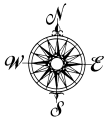







 | |||||
|---|---|---|---|---|---|

|

|

|

|

|
|
 | |||||
 |
|||||

 
  
 |
Retail 1.
Retail Basics
Retail is the final step when a consumer exchanges cash for a good or service for his or her personal or household use. This being an ultimate economic activity it is one of the oldest and the largest industry in the world. It typically accounts for 8% of the Gross Domestic Product (GDP) of an advanced country. In 2002 it was US $ 6.6 trillion; and larger than any other industry such as Financial Services; Engineering; Chemicals; Packaged Goods; Electronics & Telecommunications OR Automobile. It provides 18% Return on Investment (ROI) to investors. It is also one of the biggest employers in most countries. In a country such as India though it is limited to only a 3% organized sector compared to the USA which is 85% - the trading activity is practiced by an estimated 12 million. (dhunkanwalas ). 2.
Retail Theories
Formats; combinations of Department Stores; Super Markets; Shopping Malls; Specialty Stores; each provide different models in different societies in different Geographic Locations. Demographics and the Psychographics profile of the community they service determines a wide variety of social and economic study in every part of the world. 3.
Retail Strategy
A strategic direction; environmental and brand positioning; coverage; pricing; clustering; category assortments; prime locations and real-estate; consumer behaviour; return on investment sought; Governmental and Local State controls; and available quality Human Resources provide a wide range of options and choice to define; manage and monitor a successful and profitable strategy. 4. The
Retail Consumer
The most important part of the whole jigsaw while eventually catering to one customer with one need the Planning and Execution of Retail is to find the one customer yet; maintaining the maximum efficiency in trying to manufacture; distribute and sell a one-size-fits-all un-real product. 5.
Store Location
Business Districts; Shopping Centers; Real Estate Prices; Other non-shopping acvity; Main Street; Access; Property development; Consumer Convenience; all affect this aspect of retailing. 6.
Retail Merchandising
The Analysis; Planning; Acquisition; Handling; Controlling; Directing and assortment mix of actual products on the shop floor. 7.
Buying
Identifying sources; and supplies; contracts; vendor relationship management; purchase quantity and off-take volumes; brands; labels; duties; taxes; transportation; availability all affect buying decisions. 8.
Pricing
A key aspect of Buying; the market usually decides the pricing. Establishing a brand and maintaining perceptions in the mind of a consumer defines the Buying of required components with the value addition of the retailer. 9.
Human Resources in Retailing
People are most important. 10.
Retail Operations
The day to day operations of a store. Store timings; days closed; statutory requirements; bookkeeping; back-office; point-of-sale cash collections and reconcilliations. 11.
Metrics and Financial Performance
Measurement of goods movement; balancing purchase and sales. Amount of inventory held; ratios; measure; metrics; key-performance indicators; 12.
Information Technology
Automation; information storage; software; hardware; networking; barcode; RFID; point-of-sale terminals; Supply Chain Management (SCM); Enterprise Resource Planning (ERP); Customer Relationship Marketing (CRM) are all made possible because of IT. 13.
Marketing and Communications
Establishing a brand; creating walk-in traffic; ensuring match of customer expectations to available products; sales documentation; Point-of-Purchase Displays; Advertising; Events; Publicity; Referrals; Mailing Lists; Brochures; are all a part of the Marketing and Communications mix associated with any retail brand. 14.
Servicing and Fulfillment
At each sale a customer has to provided with a product or service and money collected and both parties should be satisfied to ensure future such transactions and keep the flow of retail economic activity a constant and growing businees.. 15.
Store Design and Sensory Ambience
The visual display; access; sounds; sights and total sensory perception from first-walk-in ensures positive feelings in a consumer; inducing purchase; satisfaction and potential happiness. This cannot be under-stated or under-estimated. 16.
Supply Chain Management
Integrating all this into a seamless chain; from demand to supply and back to deman; quickly provides Business models such as ECR (Efficient Consumer Response); CPFR (Collaborative Planning, Forecasting and Replenishment). |
|---|